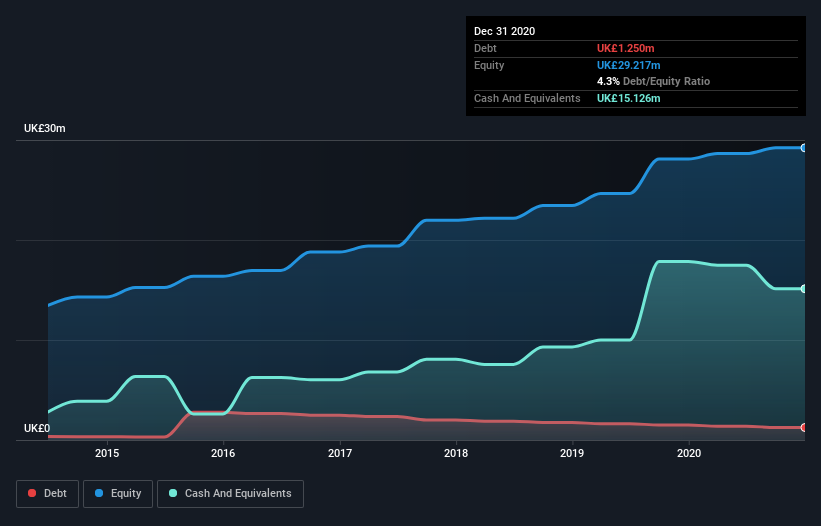These 4 Measures Indicate That Billington Holdings (LON:BILN) Is Using Debt Reasonably Well
Legendary fund manager Li Lu (who Charlie Munger backed) once said, 'The biggest investment risk is not the volatility of prices, but whether you will suffer a permanent loss of capital.' So it might be obvious that you need to consider debt, when you think about how risky any given stock is, because too much debt can sink a company. We note that Billington Holdings Plc (LON:BILN) does have debt on its balance sheet. But is this debt a concern to shareholders?
Why Does Debt Bring Risk?
Debt and other liabilities become risky for a business when it cannot easily fulfill those obligations, either with free cash flow or by raising capital at an attractive price. In the worst case scenario, a company can go bankrupt if it cannot pay its creditors. However, a more usual (but still expensive) situation is where a company must dilute shareholders at a cheap share price simply to get debt under control. By replacing dilution, though, debt can be an extremely good tool for businesses that need capital to invest in growth at high rates of return. The first thing to do when considering how much debt a business uses is to look at its cash and debt together.
See our latest analysis for Billington Holdings
What Is Billington Holdings's Debt?
The image below, which you can click on for greater detail, shows that Billington Holdings had debt of UK£1.24m at the end of December 2020, a reduction from UK£1.50m over a year. But on the other hand it also has UK£15.1m in cash, leading to a UK£13.9m net cash position.
How Healthy Is Billington Holdings' Balance Sheet?
Zooming in on the latest balance sheet data, we can see that Billington Holdings had liabilities of UK£18.9m due within 12 months and liabilities of UK£1.48m due beyond that. Offsetting these obligations, it had cash of UK£15.1m as well as receivables valued at UK£12.2m due within 12 months. So it actually has UK£7.03m more liquid assets than total liabilities.
This excess liquidity suggests that Billington Holdings is taking a careful approach to debt. Given it has easily adequate short term liquidity, we don't think it will have any issues with its lenders. Simply put, the fact that Billington Holdings has more cash than debt is arguably a good indication that it can manage its debt safely.
It is just as well that Billington Holdings's load is not too heavy, because its EBIT was down 72% over the last year. Falling earnings (if the trend continues) could eventually make even modest debt quite risky. There's no doubt that we learn most about debt from the balance sheet. But it is future earnings, more than anything, that will determine Billington Holdings's ability to maintain a healthy balance sheet going forward. So if you want to see what the professionals think, you might find this free report on analyst profit forecasts to be interesting.
But our final consideration is also important, because a company cannot pay debt with paper profits; it needs cold hard cash. While Billington Holdings has net cash on its balance sheet, it's still worth taking a look at its ability to convert earnings before interest and tax (EBIT) to free cash flow, to help us understand how quickly it is building (or eroding) that cash balance. During the last three years, Billington Holdings generated free cash flow amounting to a very robust 82% of its EBIT, more than we'd expect. That puts it in a very strong position to pay down debt.
Summing up
While we empathize with investors who find debt concerning, you should keep in mind that Billington Holdings has net cash of UK£13.9m, as well as more liquid assets than liabilities. The cherry on top was that in converted 82% of that EBIT to free cash flow, bringing in -UK£2.6m. So we don't think Billington Holdings's use of debt is risky. The balance sheet is clearly the area to focus on when you are analysing debt. However, not all investment risk resides within the balance sheet - far from it. For example, we've discovered 4 warning signs for Billington Holdings (1 can't be ignored!) that you should be aware of before investing here.
At the end of the day, it's often better to focus on companies that are free from net debt. You can access our special list of such companies (all with a track record of profit growth). It's free.
This article by Simply Wall St is general in nature. It does not constitute a recommendation to buy or sell any stock, and does not take account of your objectives, or your financial situation. We aim to bring you long-term focused analysis driven by fundamental data. Note that our analysis may not factor in the latest price-sensitive company announcements or qualitative material. Simply Wall St has no position in any stocks mentioned.
Have feedback on this article? Concerned about the content? Get in touch with us directly. Alternatively, email editorial-team (at) simplywallst.com.

